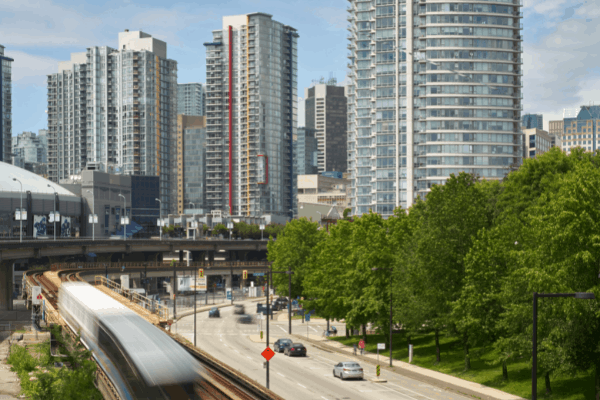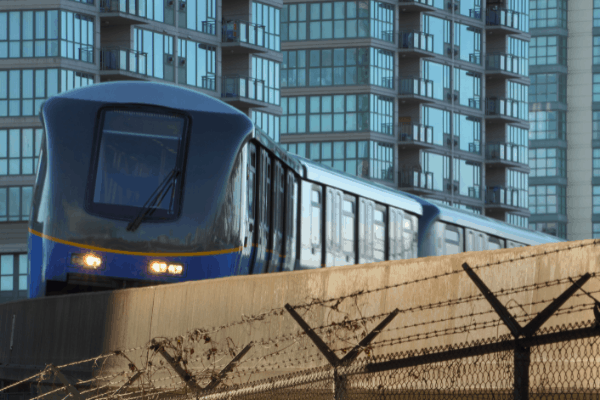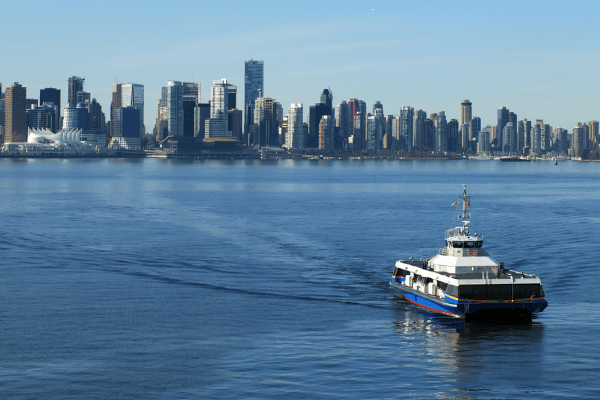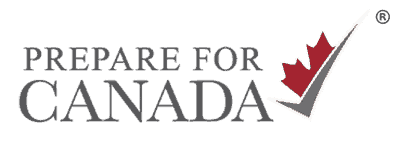
Public transit is one of the most convenient and affordable ways to get around Metro Vancouver. Whether you have just moved to Metro Vancouver or you are visiting there, you will probably have to rely on public transit to get around. In this article, you will learn all you need to know about Vancouver’s transit system and how to use it to get around Metro Vancouver quickly and cost-effectively.
Using Vancouver’s Public Transit System
Vancouver’s public transit system is managed by TransLink, the company that looks over Metro Vancouver’s transportation network. Vancouver Metropolitan Area, or simply Metro Vancouver is a group of municipalities that include the city of Vancouver and its surrounding cities such as Burnaby, Surrey, and Richmond.
Advertisement:
There are 4 transit systems in Metro Vancouver. You will only be needing to use the first three to get around Metro Vancouver. The fourth is a commuter railway that connects Metro Vancouver with nearby towns and cities:
- SkyTrain
- Buses
- Seabus
- West Coast Express
Advertisement:
Let’s take a deeper look at each of these systems below.
SkyTrain
SkyTrain is Metro Vancouver’s rapid transit system. Launched in December of 1985, the SkyTrain system has helped Vancouverites and visitors get around the city quickly and efficiently. At an average speed of 35 km/h, the SkyTrain is a convenient way to meet your transportation needs in Metro Vancouver.
SkyTrain uses automated trains that run on both underground and elevated tracks throughout the city. Since it mostly runs on elevated tracks, the transit system was named SkyTrain.

Buses
Buses are the most common way of using public transit in Canadian cities. The SkyTrain system along with buses is enough to serve most of your transportation needs around the Metro Vancouver area. Buses run through neighbourhoods at frequent timings from 5:00 AM to 1:00 AM.
Buses connect different parts of the city to major destinations and SkyTrain stations. You can get almost anywhere in Metro Vancouver by using buses. However, the longer the distance, the more buses you will probably have to change, resulting in longer travel times. If you plan on using public transit often, you can open Google Maps and look at the best routes to get to your destination. Oftentimes, the best way to get to your destination could be by using both SkyTrain and the bus.
Advertisement:
SeaBus
Vancouver’s SeaBus is a ferry service that connects the city of Vancouver to North Vancouver by crossing the Burrard Inlet. The SeaBus system operates from 6 AM to 1 AM from Monday to Saturday and from 8 AM to 11 PM on Sundays and Holidays.

Vancouver SeaBus
Throughout the day, you can board a passenger vessel every 15 minutes. However, on Sundays and evenings of the rest of the week, a vessel will only come every 30 minutes. This is because, during the day, 2 passenger vessels are in service while during the evenings and Sundays, only 1 vessel is getting passengers across the Inlet.
West Coast Express
The West Coast Express is a commuter railway that connects the cities of Vancouver and Mission. It runs from Waterfront Station in Downtown Vancouver to Mission City Station in Mission. Between Vancouver and Mission, it stops at 6 stations. In total, the West Coast Express covers 8 stations, stretching over 69 kilometres. It takes approximately 1 hour 15 minutes to make the journey from Waterfront Station in Vancouver to Mission City Station through the West Coast Express.
Public Transit Fare in Metro Vancouver
Metro Vancouver is divided into 3 fare zones when it comes to its public transit system. If you are using either the SkyTrain or the SeaBus, the amount you pay is based on how many fare zones you cross. However, if you are on a bus, you will be charged for a one-zone ride no matter how many zones you cross.
If you are travelling on weekends/holidays or after 6:30 PM on weekdays, you will also be charged a one-zone fare. This applies even to SkyTrain and SeaBus fares. It is important to know how many zones you are going to cross on your trip and when so you know how much you will be needing to pay.
Public Transit Fare Zones
Fares zones divide metro Vancouver into 3 zones. If you are using SkyTrain or SeaBus, you need to keep these in mind because crossing one or more of these zones will require you to pay more for your ride. Keep in mind that the West Coast Express has completely different zones as it goes outside the Metro Vancouver region.
The fares listed below are for bus, SkyTrain, and SeaBus journey and are for each fare zone in Metro Vancouver:
1-Zone Fare – $3.05
2-Zone Fare – $4.35
3-Zone Fare – $5.90
Concession Fares
Children/ youth between 5 and 18 years of age and seniors over 65 years of age are eligible for concession fares. Concession fares are a discounted version of the regular fare for each zone. Like the regular fare, the numbers listed below only apply to buses, SkyTrain and SeaBus.
Here are the discounted concession fares for each fare zone:
1-Zone Concession Fare – $2.00
2-Zone Concession Fare – $3.00
3-Zone Concession Fare – $4.05
Here, you will find TransLink’s guide to fare zones and the full fare pricing table. You will also find all your options for paying fares on buses, SkyTrain and SeaBus.
West Coast Express
The fare system for the West Coast Express can get a little complicated. In this section, I will try to break it down. The West Coast Express line has 8 stations that are divided into 5 zones. Before I explain any further, let’s take a look at the 5 zones in the West Coast Express.
1 Zone: Waterfront Station (Downtown Vancouver) – Station 1
2 Zone: (No stations)
3 Zone:
- Moody Center (Port Moody) – Station 2
- Coquitlam Central (Coquitlam) – Station 3
- Port Coquitlam (Port Coquitlam) – Station 4
4 Zone:
- Pitt Meadows (Pitt Meadows) – Station 5
- Maple Meadows (Maple Ridge) – Station 6
- Port Hanley (Maple Ridge) – Station 7
5 Zone: Mission City Station (Mission) – Station 8
So what do these zones mean for you as a traveller? If you travel from Waterfront Station (Downtown Vancouver) to Mission City Station, you would have to pay a full 5-zone fare. This is because there are 5 zones between Waterfront and Mission City. However, if you were to travel from Mission City to Pitt Meadows, you would only have to pay a 2-zone fare. This is because you will have to travel through 2 zones to get to Pitt Meadows.
In general, you will have to pay somewhere between $6 – $13 for a regular one-way ticket. The price would drop to around $4 – $8 for a concession ticket. Remember, the more zones you cross, the more your ticket will cost.
Click here for TransLink’s guide to learn more about the West Coast Express and its fare system. This guide also has the full fare pricing table so if you are planning to use the West Coast Express, make sure to check that table before you purchase your ticket.
Increase Public Transit Ease with a Compass Card
Compass cards are the most convenient way to pay for fares in Metro Vancouver. Not only are they easy to use but they will also save you money. A Compass card is a fare card you can use to pay fares for buses, SkyTrain, SeaBus, and the West Coast Express.
There are two ways you can use your Compass card. The first is to add stored value to your card. Stored value is the amount of money you have added to your Compass card. You can use this money to pay for fares whenever you use the public transportation system.
The second way you can use your Compass card is by buying passes. There are 2 types of passes; day passes and monthly passes. As you may have guessed, day passes allow unlimited use of public transportation for a day while monthly passes allow unlimited travel for a month. Keep in mind that monthly passes expire at the end of the month, not after 30 days. Because of this, you cannot buy a monthly pass after the 15th of every month.
So why is a Compass card the best way to pay for fares. Compass cards will charge you less money than regular fares. You can compare how much it would cost to pay for adult fares by cash and by a Compass card.
| Zone | Cash | Compass Card |
| 1 | $3.05 | $2.45 |
| 2 | $4.35 | $3.55 |
| 3 | $5.90 | $4.60 |
If you plan on using the public transportation system a lot, you should consider getting a Compass card. Over time, paying by cash will really start to add up to your cost of living.
How to Use Your Compass Card
Whenever you enter a bus, you will need to tap your Compass card to the card reader inside the bus. This will automatically pay for your ride, as long as you have enough balance on your card. To use the compass card on SkyTrain, SeaBus, and the West Coast Express, you need to tap the card before you enter and exit so the card reader knows how many zones you travelled and charge you accordingly.
Where to Buy a Public Transit Compass Card
There are many places where you can buy and reload your Compass Card. The easiest way is to get one online. Visit this site to purchase a Compass card online. Once you have paid for the card, it will be mailed to your location in Canada.
Another way to buy and reload Compass cards is through Compass retailers and Compass Vending Machines (CVMs). Compass retailers are any stores that sell compass cards. You can find CVMs at every SkyTrain, SeaBus and West Coast Express station. For a map of all the CVMs and Compass retailers in Metro Vancouver, click here. You will have to pay a $6 refundable fee when you buy a Compass card.
You can also buy a Concession Compass card. Anyone eligible for concession fares is also eligible for a Concession card. Just like concession fares, Concession cards will charge you less money for each trip. Regular Compass cards are blue while Concession cards are orange. Note that you cannot buy a concession card at CVMs.
You can return the compass card and collect your $6 fee once you are done using the card. This is especially useful for visitors in Metro Vancouver as they will not have to worry about the $6 fee to purchase the card.
To learn more about Compass cards, visit TransLink’s guide to Compass Cards. If you want to learn how to use your Compass card, click here.
Vancouver’s public transit system is not that hard to understand. It might seem complicated online but once you start using it, everything will become clear and make more sense. Taking the time to understand how the public transit system works in Metro Vancouver will help you save time and money in the long run.
For more information, tools, and free webinars about living in Canada visit our Settling in Canada resource page. We’ll help you to settle in Canada successfully!

My name is Zain Usmani and I am a freelance content writer who currently resides in Mississauga, Ontario. I immigrated from Pakistan to Canada 5 years ago and have lived in many cities ever since. I have lived in Calgary AB, Edmonton AB, Regina SK, London ON, and Mississauga ON, while visiting over 40 Canadian cities and towns. I have a great passion for writing and I love helping people through it.


